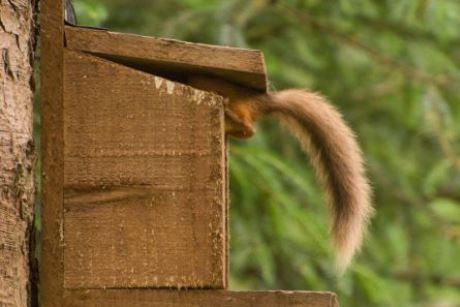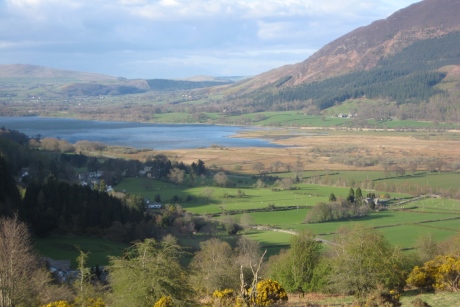School Travel Organiser finds out what’s special about Whinlatter Forest, and why a classroom in the forest serves as a great place to learn about the environment.
.jpg)
Learning in the wilderness
Set high in the north of the Lake District National Park, Whinlatter is an English mountain forest that is managed by the Forestry Commission for timber, recreation and wildlife. It also serves as a learning outside the classroom venue, with a dedicated educational team for school groups of all ages.
The education department has been running since 2013, and is led by trained teachers Phil Cheesley and Barbara Thomson, and their team of tutor rangers.
With views towards Derwentwater and Bassenthwaite Lakes, and a skyline cut by Skiddaw, Lord’s Seat and Grisedale Pyke, Whinlatter offers pupils a classroom not just in a forest, but in spacious wilderness.
With visitor centre facilities readily available and a classroom backing straight out onto the forest, outdoor learning is the sole focus of a school trip here.
Pictured: Views of the Lake District National Park, where Whinlatter is based.
Catering for all Key Stages
Whinlatter is a LOtC registered venue, and the Classrooms in the Forest remit is wide. The education team provides suitable programmes for children from Preschool, through all Key Stages, right up to university level learning.
There are a range of specialist rangers and tutors available to teach your students during their experience.
Teachers can opt for full or part day outdoor education session, and if they want to extend a stay, there is a selection of hostels and residential centres within easy reach of the forest.
A classroom with many uses
The outdoor classroom at Whinlatter is in a traditional cedar roofed wooden building. It is able to accommodate up to 30 students for indoor learning activities, and also acts as a shelter from the rain, a lunch venue, and a base for orienteering.
With regards to the area outside of the classroom, there are paths, trails and activity areas, such as the pond and the blindfold trail. There are also marked walks to suit most abilities, a wild-play area, a permanent orienteering course and mountain biking trails.
The visitor centre opposite the classroom has toilets, a gift shop and café, plus ample parking for coaches.
.jpg)
Pictured: A student uses the forest’s natural resources to learn about the environment.
Tying in to the National Curriculum
As trained teachers, Phil and Barbara make sure there is always a conversation with the lead teacher before they book a class visit, to ascertain the aims and objectives of the group.
National Curriculum links, ages and learning levels of pupils as well as special education needs are taken care of prior to a visit.
Learning in the forest can be easily adapted to underpin many strands of the curriculum. Schools have used it for Science, Maths, Art, and Geography, so it’s the teacher’s choice as to the subject focus of a visit.
Tailor-made sessions are also welcomed. A recent school group tied in Literacy and History to their visit and become stone-age people, tapping a birch tree for sap, learning about edible plants and going home daubed with ochre.
Using the forest’s resources to teach environmental education
Primarily, Whinlatter is a forest venue so environmental education is an obvious choice with regards to what classes can learn about.
Animal habitats, trees, climate change, mini-beasts and pond dipping are all areas that can be covered easily due to the location’s natural resources. Pupils can also see ospreys and red squirrels on live webcams.

Pictured: A red squirrel; students can watch these, as well as ospreys, on live webcams.
On the day
The rangers recommend a mix of activities for the class to get the most out of their day. A typical itinerary starts at 10am, with a welcome and a short introduction to the forest by an assigned ranger in the classroom.
The class then heads off into the forest for an environmental activity followed by a team building exercise, finishing with a look at osprey chicks on the live webcam. Team building activities range from shelter construction and blind-fold trails to conservation tasks.
Lunch falls at 12.30pm in the classroom or an outdoor picnic area, before an afternoon of orienteering on a trail or having some free fun time in the wild-play area.
For older students specialist forestry, environmental and adventure tourism sessions are covered by Forest Commission education rangers.
The Whinlatter Centre is a working example of the Lake District National Park ‘Adventure Capital’ rebranding – a long-term plan to boost tourism to the area, as well as prove the benefits of visiting the great outdoors.
Back in the classroom
Classrooms in the Forest places great emphasis on talking to teachers personally prior to their visit, either by phone or meeting them on site. The teacher is supported throughout the process of organising the trip right through to returning with their pupils to the school classroom.
There is ample scope for follow up work, like using collected Science data to create bar charts of mini beast finds. This information can also be used as a base for Literacy recounting exercises or inspiration for fiction. Alternatively, students can go home with bags of collected forest materials for Art or Design and Technology work.
Additionally, the Forestry Commission website has a series of learning pages, including overviews about England’s state forests and the tree cycle.
For further information call 01539-624364 or e-mail phil.cheesley@btinternet.com.











